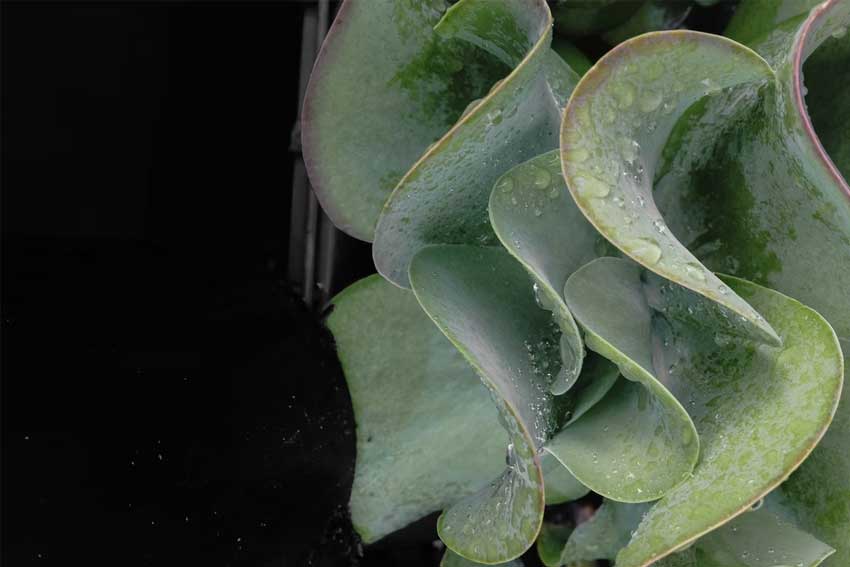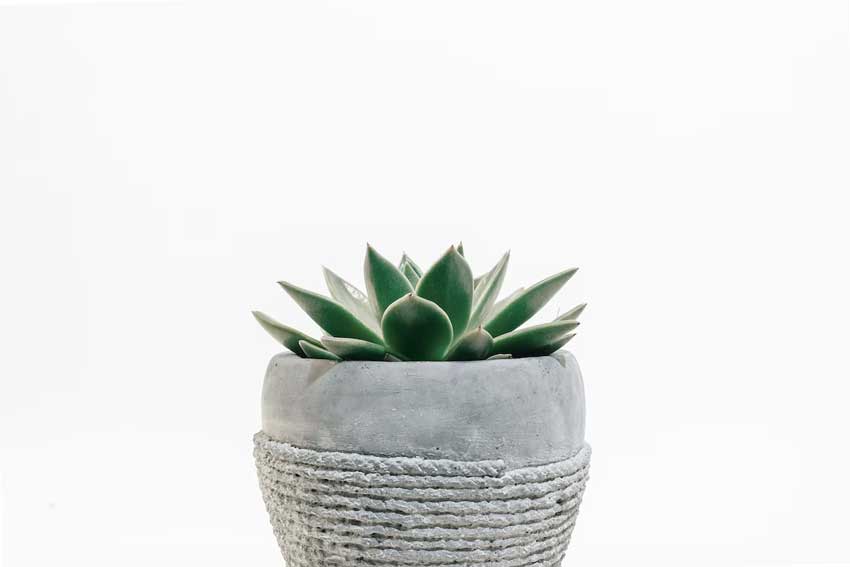The paddle plant looks pretty due to its spectacular flowering succulent leaves. Like others, this plant has some problems and paddle plant leaves curling like jude is one of the most common ones.
Paddle plants are native to South Africa, Swaziland, Mozambique, Zimbabwe, and rainforests everywhere. Several other names of this plant are kalanchoe thyrsiflora, calandivas, flapjacks, white lady, desert cabbage, plakkie, etc.
They love bright light with dry and sandy soil. The flapjack plants might be curling due to scarcity or excess of any element like too much drying or overwatering or inadequate lighting. There are several other reasons too that we plan to explain here with their solution.
10 Causes and Solutions of Paddle Plant (Succulents) Leaves Curling
There are several reasons behind flapjack leaves curling and drooping. Some of the key reasons and how to fix kalanchoe leaves curling (like an olive tree) are discussed below.

1. Unplanned Habitat of Paddle Plant
Paddle plants originated from desert-like areas so they are quite sensitive. A golden rule is that if you have kalanchoes, you should create a habitat that resembles their families.
With hostile environments, they mightn’t grow as well and show some problems like Kalanchoe leaves curling and wilting that you never expect. If the temperature, light, and humidity aren’t friendly for them, leaves curling also be seen.
Solution
Choose the right plants that closely resemble kalanchoe plants.
2. Overwatering
Watering too much atop the soil is a potential reason why paddle plants’ leaves curl inward like yucca plant. A thing you should know here about kalanchoe plants. They are succulent plants that can store water in their leaves for a couple of days.
These desert cabbages adapt to the hot weather and you don’t need to water them regularly. Excess watering can lead to flapjack plant leaves curling (like calathea), fungal spots, browning, and in extreme cases death in the long run.
Solution
Fingertip is a proven method to understand whether plants need water or not. Just tap one inch of your finger in the soil, if it’s dry water the plants otherwise not.
3. Scarcity of Light
Paddle plant grows in hot weather, so they can deal with the sun well. Proper lighting is important for the right growth of them.
The indoor plants mightn’t get proper light. You can place them beside the window. If they are set in outside, be sure they won’t burn due to excessive sun rays.
However, outdoor flapjacks sometimes scorch, leaves curl, or turn red (like apple tree leaves) due to excessive heat. In this case, you can put some shade on them so they get indirect sun rays.
But too low light will hinder their growth the phenomenon is called etiolation. So, move them in adequate light.
Solution
You can put shade cover on the outdoor plants to prevent them from burning. And for indoor plants, you can install powerful grow lights.
4. Low Humidity
Kalanchoe thrives in high humidity as they are desert plants. In low humidity like in winter, they mightn’t be very comfortable and their growth will hinder. So, leaves curling might be seen.
But they get relieved in the summertime as humidity is high in this period. Bring them outside then so they get relieved in high humidity.
Solution
To control the humidity, you can invest in a plant humidifier. And be sure the humidity is above 40%.
5. Lack of Water for Paddle Plant Leaves
Underwatering may turn the flapjack plant leaves curl like a curry plant. They are fans of well-drained soil. It’s important to keep them dry for some time between the watering sessions.
But if it gets too much drying, this will be harmful to these plants. If Kalanchoe looks dry, it’s a clear indication that the plants need water.
Solution
You should check the soil and when it seems dry, feed them water.
6. Temperature
Kalanchoe plants originated from tropical regions so they can deal with high temperatures easily. They don’t flourish well if the temperature is too low.
So, putting the paddle plants constantly in low temperatures isn’t good. This may show leaves curling and afterward form gray mold and black spots too.
Kalanchoe grows well in small shaded areas with no high temperature. If the temperature is too high, you can spray mist to prevent drying out.
Solution
The ideal temperature for paddle plants is 65oF to 85oF. So, maintain the temperature and keep the plants below this temperature zone area.
7. Incorrect Potting
Flapjack plants thrive in sand and dry soil having proper aeration and nutrients. The most readymade potting mixes available in the market aren’t good for succulent plants.
So, if you choose soil, they don’t have proper drainage holes and aeration, and paddle plants won’t flourish there well. Moreover, the minerals you need for kalanchoe can’t be obtained from the potting mix. Using this soil for paddle plants may cause leaves to curl like spinach and fold.
Solution
Repot the plants soon and prepare the soil for flapjacks that are specifically designed for succulents with proper minerals, aeration, and drainage holes. Even if you use the right soil, it’s recommended to repot the plants every spring.
8. Overfertilization
Overdoing is not better always and in case you apply over-dosed fertilizer to the calandivas plants, this is true. If you feed them excess fertilizer, the leaves might curl.
During the flowering period, it’s enough the apply fertilizer two times monthly. Except that, you can give fertilizer once per month at a reduced level.
Solution
Late winter to the end of spring is the growing period for paddle plants so feed them twice during that time. And in regular time, fertilize the plants once per month half of the bag’s suggestion.

9. Quality of Water
Most gardeners use tap water as it is accessible. But it could harm the paddle plants as it contains lots o minerals and salts that may curl the leaves as well as drooping.
This happens as minerals and salts change the pH level of the soil. It can rot the roots of the plants, leaves to curl and fall.
Solution
Flapjack plants prefer mildly alkalic or mildly acidic soil pH between 6.1 to 7.8. So, maintain it. Rainwater is a good source in this regard.
If you see rots in roots run underwater to remove the excess minerals and salts. You can also prune the leaves so healthier leaves grow soon.
10. Pest Attack on Paddle Plant Leaves
Bugs problem in paddle plants might be seen due to underwatering, poor maintenance and cleaning as well as if the soil has poor aeration and drainage. This may result in leaves drooping, curling, and even cause falling off.
Some of the common bugs that may invade kalanchoe plants are whiteflies, aphids, red spider mites, and mealybugs. These pests attack the base of the plants and suck the nutrients from the plant.
If you don’t treat the plants for long, bugs will make moldy spots on plants’ leaves and start blocking the sun’s rays. In this way, paddle plants may die consequently.
Solution
You can prune the affected leaves to protect other leaves. And apply pesticides or neem to get rid of these pests.
Final Thoughts on Paddle Plant Leaves Curling Issue
So, why are the paddle plant leaves curling like aloe? This may happen for many reasons such as improper watering, wrong potting soil, lack of water, scarcity of humidity, low temperature, overfeeding, pest invasion, etc.
If you see kalanchoe leaves curling, this indicates that something might be wrong. It’s high time to find out the reason quickly, why this is happening, and then fix the problem.
A short video on how to take care of paddle leaf succulents:

I’m Shofi, a passionate gardener and blogger. I have 10+ years of experience in gardening and hold certifications in horticulture and garden design. I share my knowledge and skills through my garden blog to inspire and educate others on the joys of gardening. I try to provide valuable information and create a community for gardeners of all levels to connect and learn. My ultimate goal is to inspire others to start their own gardens and connect with nature.
